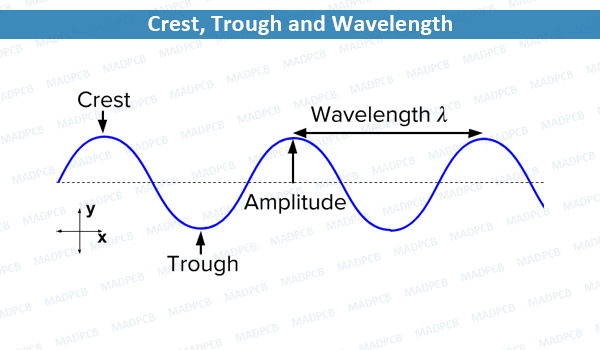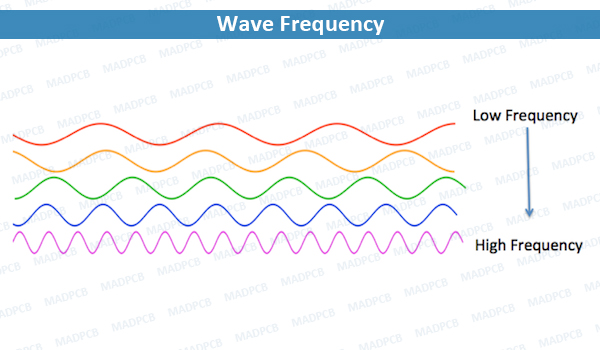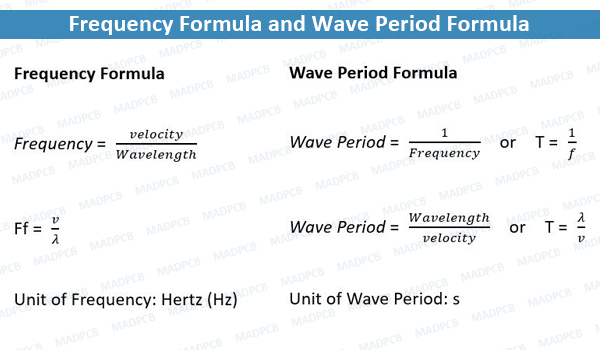What’s a Wave Period?
A Wave Period is the time to complete one full cycle of a periodic or repeating wave form.
For a wave pattern, like sound wave and microwave, it has crest or peak, which is the highest point. It also has trough, the lowest point. The wavelength of a wave is the distance between one of its peaks and the next peak. Wavelength is represented by the Greek letter lambda λ.
The distance between peaks is the same as the distance between troughs. We can also measure wavelength from one trough to the next. Either way, the wavelength will measure the distance of one wave cycle, or one completion of the wave’s repeating up and down pattern.
The measure of time it takes for the wave cycle to complete. We usually measure it in seconds and represent it with the letter T.

Crest, Trough and Wavelength
Frequency of a Wave
Before we find the period of a wave, it helps to know the frequency of the wave, that is the number of times the wave cycle repeats in a given time period. This graph shows us five different waves with different frequencies. You can see that a different amount cycles over the same period of time. We could find the exact number by counting the peaks or troughs. The red wave has the lowest frequency among the five because it has the least number of repeating cycles, and the pink wave has the highest frequency because it has the highest number of repeating cycles.
Frequency (f), can be obtained by dividing the wave’s velocity, usually symbolized by the letter v, by its wavelength. Remember, we represent it with the Greek symbol: lambda (λ). We usually measure the wavelength in meters and the velocity in meters per second. The frequency found using these units will be measured in Hz (hertz), another way of saying cycles per second.

Wave Frequency
Let’s say we determine a wave moves at 60 Hertz; that wave will have 60 cycles per second. When writing formulas, Hertz is usually abbreviated to Hz.

Frequency Formula and Wave Period Formula
How to Find a Wave Period?
The higher the frequency of a wave, the lower the period. After all, if you’re going to fit more cycles into a certain period of time, the cycle needs to be shorter.
We can say that the frequency and period are inversely proportional to each other, so if the frequency increases, the period decreases, and vice-versa. In other words, if the frequency is large, then the period is short and if the frequency is small, then the period is long.
Remember that wavelength and velocity both affect the frequency, so we can also say, the higher the wavelength, the higher the wave period and the lower the velocity, the higher the wave period.
The wave period is actually the reciprocal of the frequency, which means that any wave will have a wave period of 1 over the wave’s frequency. The standard unit for period is in seconds, abbreviated as the letter S.
